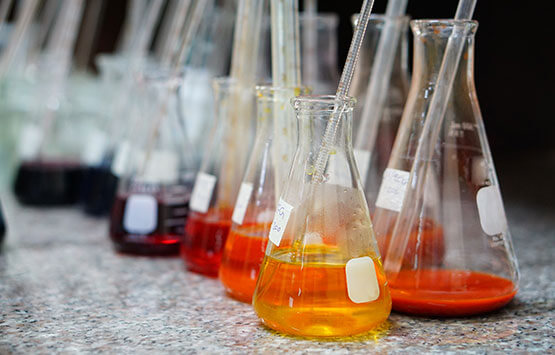Stearic Acid is a vital component in the rubber industry, playing a crucial role in improving the processing characteristics, tensile strength, and overall durability of rubber products. In this article, we will explore the significant contributions of Stearic Acid as a rubber additive, delving into its ability to enhance rubber performance. We will also include case studies and real-world applications to illustrate its impact on the rubber industry.
Stearic Acid as a Rubber Additive
In the rubber industry, Stearic Acid is widely recognized for its effectiveness as a processing aid and performance enhancer. Its role can be summarized in the following key aspects:
1. Processing Characteristics
Stearic Acid acts as a processing aid in the rubber industry, particularly during the compounding and vulcanization processes. It enhances the ease of manufacturing rubber products in the following ways:
- Facilitating Mixing: Stearic Acid acts as a lubricant, reducing the friction and improving the mixing of various rubber components, such as fillers, curatives, and polymers. This ensures a homogeneous and well-dispersed rubber compound.
- Preventing Agglomeration: It helps prevent the agglomeration of particles within the rubber mixture, ensuring uniform distribution and consistent quality.
- Reducing Mooney Viscosity: Stearic Acid can reduce the Mooney viscosity of the rubber compound, making it more manageable during processing and easier to shape into the desired product.
2. Enhancing Tensile Strength
Stearic Acid significantly contributes to the tensile strength of rubber products. Tensile strength is a critical property that measures a material's resistance to a force attempting to stretch or pull it apart. Stearic Acid's role in enhancing tensile strength involves:
- Cross-Linking Promotion: During vulcanization, Stearic Acid acts as a co-agent with sulfur, promoting the cross-linking of polymer chains. This cross-linking leads to increased tensile strength, making rubber products more robust and resilient.
- Improved Tear Resistance: The enhanced tensile strength also translates to improved tear resistance in rubber products, reducing the risk of damage and wear and tear.
3. Durability and Aging Resistance
Stearic Acid plays a pivotal role in enhancing the durability and aging resistance of rubber products. Rubber exposed to environmental factors, such as heat, oxygen, and UV radiation, can deteriorate over time. Stearic Acid helps mitigate these effects by:
- Preventing Oxidation: It acts as an antioxidant, inhibiting the oxidation of rubber compounds when exposed to oxygen. This prolongs the lifespan of rubber products and helps maintain their performance.
- UV Stabilization: Stearic Acid can enhance the UV stability of rubber, reducing the negative impact of ultraviolet radiation, which can lead to cracking and degradation.

Case Studies and Real-World Applications
To illustrate the impact of Stearic Acid in rubber industry, let's consider some real-world applications:
- Tire Manufacturing: Stearic Acid is commonly used in tire production. It improves the processing of rubber compounds, leading to better tire uniformity and enhanced durability on the road.
- Industrial Seals: Rubber seals used in industrial applications often contain Stearic Acid. It contributes to their tensile strength, ensuring they can withstand the harsh conditions of heavy machinery and equipment.
- Automotive Components: Rubber components in vehicles, such as engine mounts and suspension bushings, benefit from Stearic Acid's ability to enhance tensile strength, durability, and aging resistance.
- Footwear: Rubber outsoles in shoes and boots use Stearic Acid to improve wear resistance, providing longer-lasting and more durable footwear.
Conclusion
Stearic Acid is a key player in the rubber industry, where it enhances processing characteristics, tensile strength, and overall durability of rubber products. Its contributions to rubber processing and performance have a tangible impact on the quality and longevity of various rubber applications, from tires and seals to industrial machinery and footwear. By facilitating better mixing, improving tensile strength, and protecting against aging and environmental factors, Stearic Acid continues to be an invaluable additive in the rubber industry, ensuring the enhanced performance and durability of rubber products.

